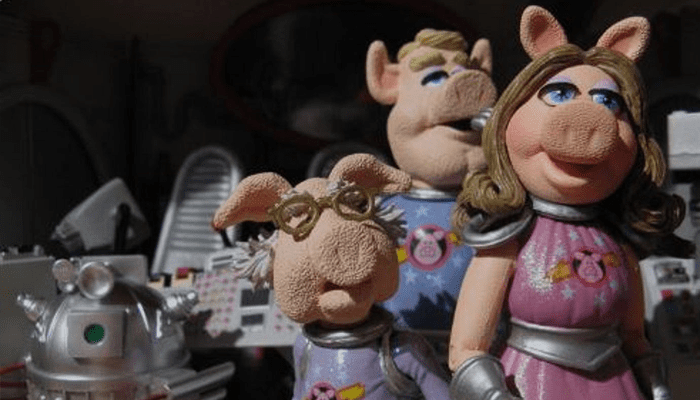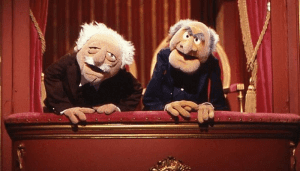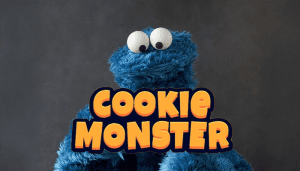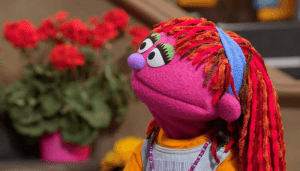When it comes to iconic television moments, few skits have left such a lasting impression as “Pigs in Space,” a much-loved part of The Muppet Show. From its debut in the late 1970s, this delightful parody of science fiction adventures captured the imaginations of viewers, blending humor, adventure, and, of course, pigs! Let us embark on an odyssey through space and time, exploring the legacy and joy of this whimsical creation that brought laughter to Earth and perhaps, even to the stars.
The Birth of a Cosmic Comedy
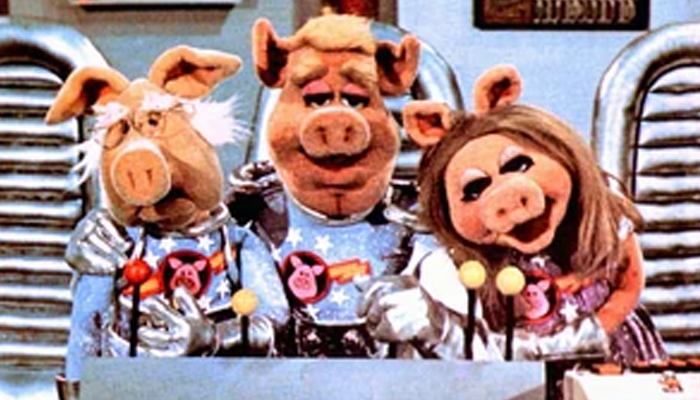
“Pigs in Space” first aired as a recurring segment on The Muppet Show during its second season, debuting in 1977. At the time, the landscape of entertainment was abuzz with interstellar fascination, a cultural phenomenon spurred on by the advent of Star Wars and other space-themed media. Jim Henson, the creative genius behind The Muppets, was well-versed in crafting entertainment that balanced satire and silliness. Thus, “Pigs in Space” was born, lovingly spoofing the popular science fiction franchises of its day, particularly Star Trek, while imbuing it with the uniquely irreverent humor of The Muppets.
Meet the Crew of the Swinetrek

Central to the charm of “Pigs in Space” is its ensemble cast of zany characters, each bringing their own quirks and comedic flair to the intergalactic narrative. Let’s meet the three porcine pioneers who helmed the spaceship Swinetrek:
- Captain Link Hogthrob: As captain of the Swinetrek, Link Hogthrob is the epitome of self-assuredness—perhaps overly so. His good looks and deep, confident voice belie a pig whose vanity often gets in the way of leadership. A parody of the archetypal dashing commanding officer, Link’s decisions frequently veer towards ridiculous rather than rational. His interactions with the crew, full of pompous declarations and misplaced bravado, are a continual source of laughter.
- First Mate Piggy: None other than Miss Piggy herself takes on the role of first mate aboard the Swinetrek. Strong-willed and glamorous, she suffers no fools and has little patience for Captain Hogthrob’s antics. Her capability and quick wit often save the crew from one mishap or another, even as she pines for the day she might captain her own vessel. Miss Piggy perfectly juxtaposes the blundering leadership of Link, often punctuating scenes with her signature karate chops and cutting remarks.
- Dr. Julius Strangepork: The German-accented Dr. Strangepork serves as the ship’s scientist and tech guru, though his inventions and experiments are anything but reliable. Characterized by his impressive mustache and a penchant for eccentricity, Strangepork’s creations often propel the crew into bizarre and perilous situations. His scientific acumen brings an additional layer of parody to the sci-fi genre, echoing the trope of the eccentric genius.
The Cosmic Comedy Beyond
What made “Pigs in Space” particularly entertaining was its ability to incorporate absurdity into familiar science fiction scenarios. Each skit was a miniature adventure full of unexpected outcomes and comedic twists, from engaging with hostile aliens to coping with malfunctioning technology. The parody was both homage and satire, as the skits amplified and gently poked fun at the genre’s tropes—the unfathomable logics of space technology, the melodramatic leadership styles, and the frequent mishaps inherent in any space opera.
In one memorable episode, the crew encounters a gelatinous creature that consumes everything in its path. The ensuing chaos is punctuated by Captain Hogthrob’s obliviousness, Piggy’s exasperation, and Strangepork’s troubled tinkering as they try to contain the creature. Such scenarios exemplified the segment’s charm: ridiculous, yet endearingly familiar to any fan of sci-fi.
Cultural Impact and Legacy
“Pigs in Space” was more than just a parody; it became a cultural touchstone, capturing the collective fascination with science fiction through the lens of humor. The segment’s popularity further cemented The Muppet Show as a pivotal piece of 20th-century television, endearing it to generations of viewers. Beyond the laughs, it showcased the depth of creativity within the Henson company, highlighting their ability to merge puppetry with engaging storytelling effectively.
The segment’s influence stretched beyond television, embedding itself into the broader spectrum of pop culture. It was referenced in other shows, used as a cultural shorthand for humorous space adventures. The characters themselves also made appearances beyond the Swinetrek, participating in various specials and interviews, showcasing their universal appeal.
The Timelessness of “Pigs in Space”
While The Muppet Show officially concluded in 1981, the Swinetrek’s voyages left an indelible mark on comedy and science fiction alike. Through reruns, DVDs, and streaming services, new audiences continue to discover the hilarity of “Pigs in Space.” The skit’s enduring appeal lies in its unique ability to speak to audiences across generations—transcending the boundaries of time and space, much like its characters.
The timeless nature of “Pigs in Space” can also be attributed to its core themes. Artfully interwoven into the humor are subtle nods to broader ideas: the follies of overconfidence, the strength found in teamwork, and the joy of curiosity and exploration. These universal ideas, conveyed through the antics of a whimsical crew, resonate just as profoundly today as they did during their original broadcast.
Pigs in the Modern Era
The legacy of “Pigs in Space” is continually renewed through revivals and tributes, often spurred by the modern reimaginings of The Muppets on screen. These homages not only celebrate the classic segment but often introduce it to a new cohort of sci-fi enthusiasts and comedy lovers. Whether through appearances in recent Muppet movies or in special television events, the Swinetrek’s crew remains an active component of The Muppets’ ever-expanding universe.
Moreover, the show’s influence can be indirectly observed in the plethora of space-themed comedies and parodies that have since followed. It set a benchmark for how humor could be cleverly woven into speculative narratives, inspiring future creators to explore the comedic potential of the cosmos.
Conclusion: An Enduring Galactic Giggle
“Pigs in Space” is a stellar example of how humor, when artfully crafted, can transcend genre and era. Its whimsical blend of parody, puppetry, and social commentary continues to provide a beacon of light-hearted entertainment, shining brightly in the storied galaxy of The Muppets. As long as there are stars to gaze upon and stories of space to tell, the adventures of Captain Link Hogthrob, First Mate Piggy, and Dr. Julius Strangepork will remain a cherished voyage in the hearts of audiences everywhere—a cosmic odyssey that started with pigs in space and ventured far, far beyond.

